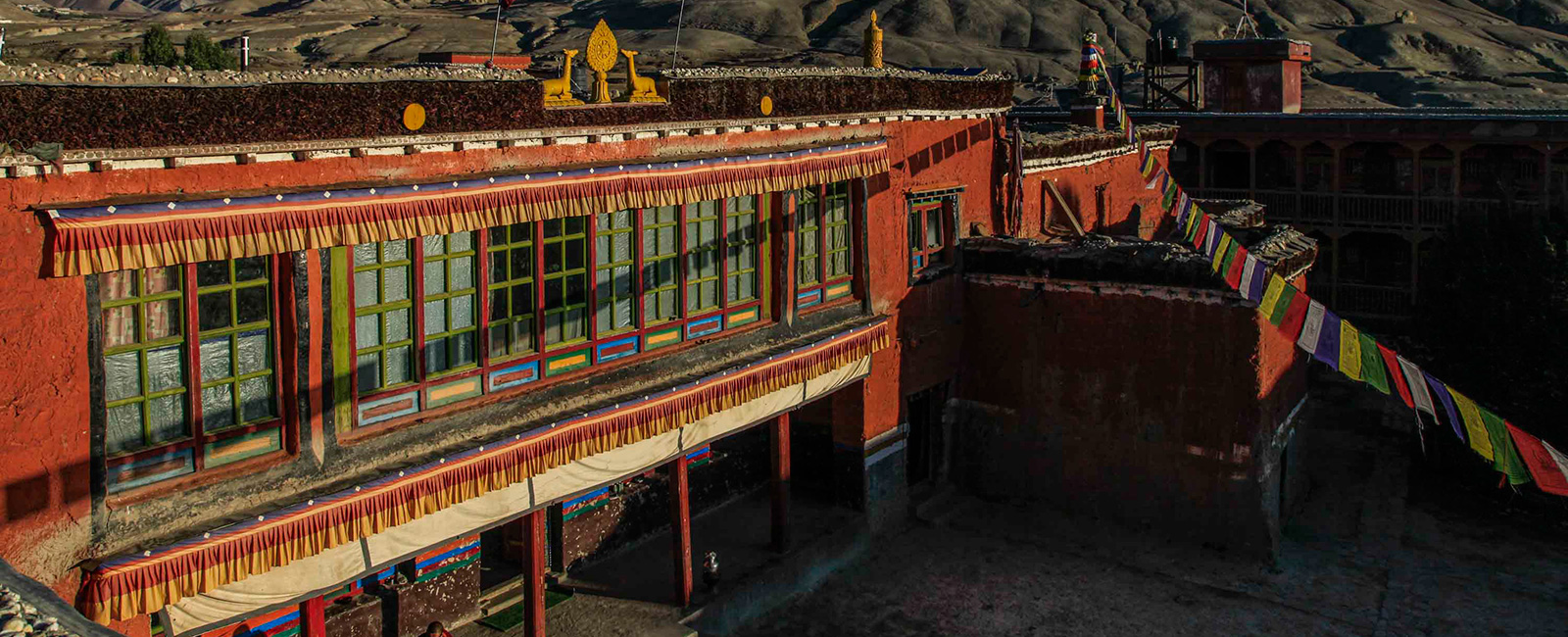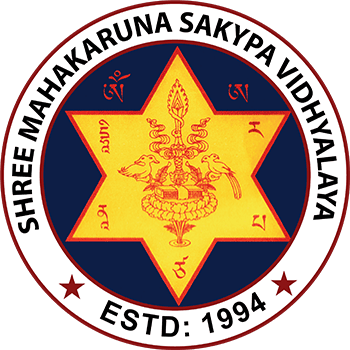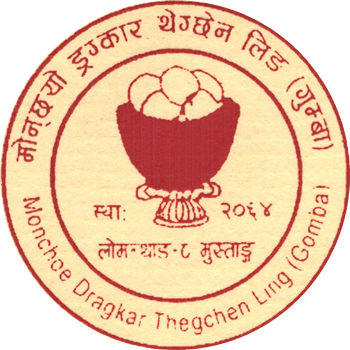
In the religious land of Lo widely influenced by the benevolent Buddhist masters universally known as Zangpo Namsum, Lowo Monthang Dragkar Thekchen Ling is one of the thriving Buddhist monasteries. At the behest of the noble being Ngorchen Dorje Chang Kunga Sangpo during the reign of the religious king Ame Pal and Kalon / minister Tsewang Sangpo, the people in the region laboured collectively to establish four great monasteries in the four directions of Khachoe, the ancient palace. To the south lies Dragkar Thekchen Ling, established in the fifteenth century and has since been consistently engaged in the preservation of Buddhism for the benefit of every individual and for universal peace.
Perhaps an obstacle to the spiritual pursuit, the monastery was destroyed in a devastating earthquake in the same century. Shrine for the deities and residence for Sangha was rebuilt at Chomrang. Again, after a few years, a fire accident destroyed the monastery to the ground. But it was famed that the principal deity at the shrine, Buddha Vajradhara remained unscathed. The reason behind it was said that the body of the statue is made of extraordinary bronze quality, the sculpturing and consecration performed personally by His Holiness Ngorchen Dorje Chang.
Due to the calamity, the monastery had to be relocated within the great walls of Lo Manthang in the northern side. The monastery and the monks’ living quarters were relocated and rebuilt where the extraordinary statues reside to these days.
To the south of Dragkar Thegchen Ling was the monastery of Ngoen-ga Choedhe founded by Penchen Shag Chog. Presenly it is included with Dragkar Thegchen Ling and the most precious object in the monastery is the Mahakala scroll painting. When His Holiness the Sakya Trizin, Ngag chang Kunga Sonam offered a ceremonial scarf, it was miraculously accepted.
Another thing included in the present day monastery is Lama Tsogyepa’s relic within an impressive stupa. The scholar arrived like a bird’s flight from Choekhor, Chumik Gyatsa in Lower region of Mustang and performed extraordinary deeds for the benefit of sentient beings. He passed away into Parinirvana at Monthang and and His last will was that his body should not be cremated but to be preserved as a relic. That in future, people can perform rituals and pray to dispel inauspicious dreams. And to these days, the Stupa within the compound of Monthang Choedhe is a source of assurance for the locals who revere the stupa when they encounter inauspicious dreams due to its miraculous power.
Born in Lo Manthang in the 20th century, the former abbot of Monthang Choedhe, the Late Jampa Tashi Tenzin introduced Summer retreat at the monastery. Then in 1994, the visionary Late Khen Rinpoche started the monastic school where novice monks are provided contemporary education alongside basic Buddhist studies until 8th grade. Then in 2004, the centre for advanced Buddhist philosophy studies was established. The Late Khen Rinpoche requested for aid from the Indian Embassy in Nepal and the latter supported the monastery earlier times and recently to build monks’ living quarters, dining hall and staff residence, creating an decent and holistic monastic environment for the monks.
Due to the severe cold in Lo during the winter, the monastic community had been resettling to Kathmandu during the winter months into rented accommodation which was a huge struggle every winter and the Late Khen Rinpoche tirelessly worked to buy a piece of land around Boudha stupa. He travelled several times to Taiwan and the United States and successfully built a three storied winter residence building. Monthang Choedhe has been the pioneering and exemplary monastic establishment with standard facilities for the resident monks.
The monastic community was still facing problems with lack of accommodation due to increasing number of young monks and in 2008, the present Khen Rinpoche of Mon Choe travelled to the United States to seek funding for the renovation of winter residence in Kathmandu, and with donations from fervent devotees from Lo who are currently residing in the States, Khen Rinpoche sought to built two additional floors. Now, the monastic community including the novice monks are able to pursue spiritual activities swiftly in spite of having to resettle every winter.


